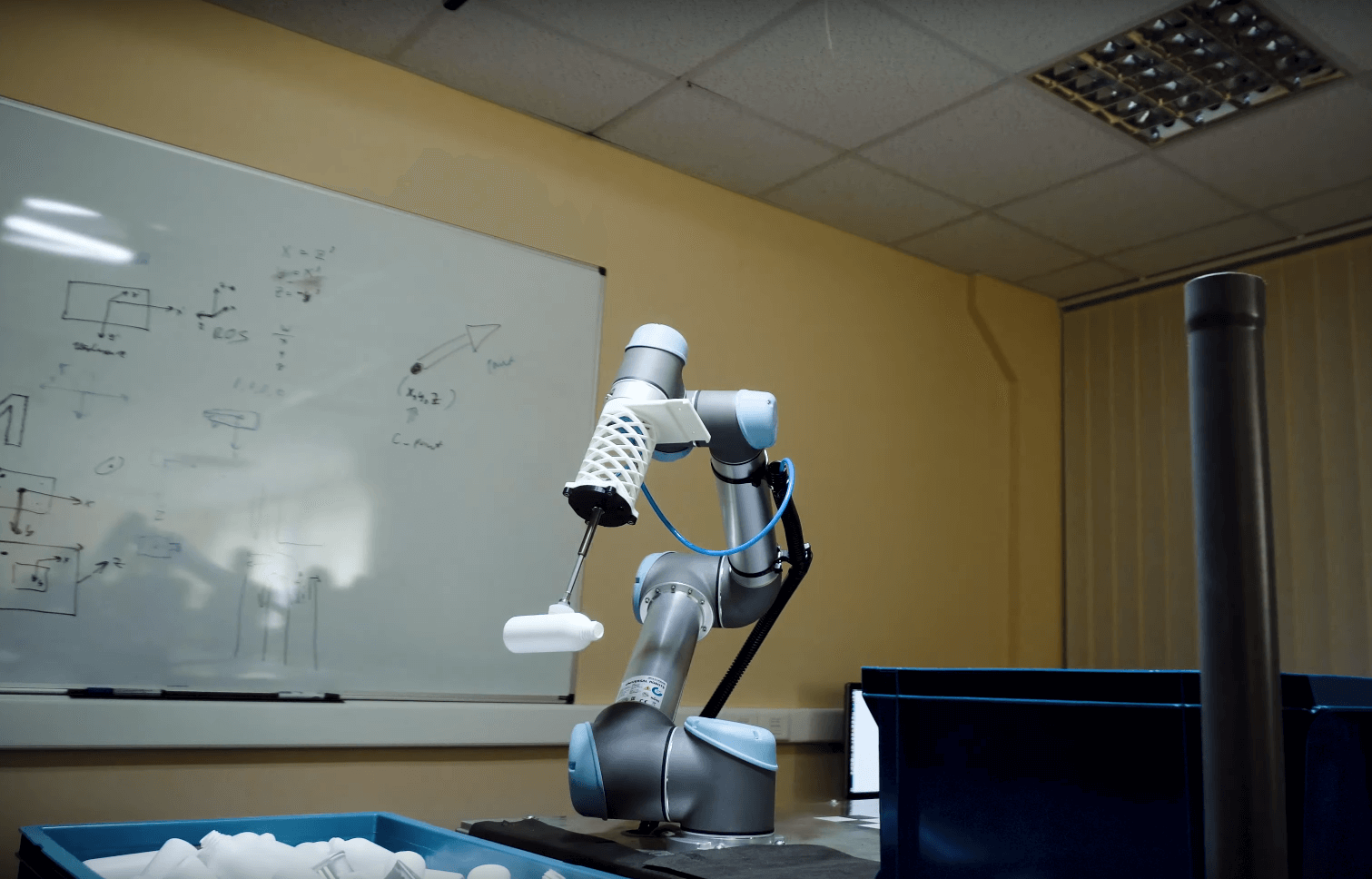Robot Control for bin picking
Topic outline
-

- Time < 2h
- Language: English
- Access:
- Free: Training Part 2
- Available only after agreement with EDI: Training Part 1 and Part 3
- Level: Intermediate
-
Most of the industrial robot-based systems have limited intelligence. They can precisely operate with objects if their position and orientation are predefined. Besides, usually, these systems can operate with no more than one or two objects. Even further, if there is a need to reconfigure the system to operate with other objects it is time and resource-consuming. If there is a need to work in a dynamic environment or manipulate objects that are randomly placed, some kind of computer vision is needed and industrial robot motions need to be planned according to data from computer vision. In this case, the complexity of the task only rises and if a robot from a different industrial robot manufacturer is used, then the implementation of the same task usually needs to be started over again, as the possibilities that each manufacturer offers are different. Therefore in this module, we are using ROS and MoveIt for robot control, to achieve flexibility and make the implementation easier.
ROS is open-source software that simplifies complex robot tasks by using hardware abstraction, drivers, different tools, libraries and simplified process communication. ROS-Industrial extends the advanced capabilities of ROS software to industrial-relevant hardware and applications. MoveIt! Runs on top of ROS and is the primary source of the functionality for manipulation (and mobile manipulation) in ROS.
The materials for robot control are divided into 4 main parts:
- ROS basics
- URDF, MoveIt! Assistant
- MoveIt! – Move Group C++ interface, control strategies
- Integration with the real robot or simulator
-
University/Research Institute/student, Technology Provider/system integrators
-
Linux, C++